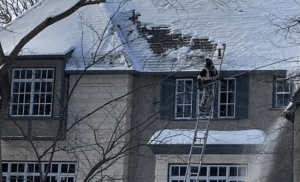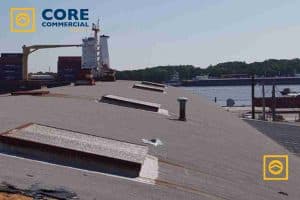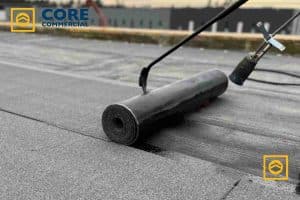Maintaining a roof sounds simple clean the gutters, check for damage, patch a few shingles. But many homeowners, even with good intentions, unknowingly do more harm than good. The smallest mistake can lead to major leaks, mold issues, or even full roof replacement if not caught early. Learning what not to do is just as important as knowing what to do.
One key area we always emphasize is neglecting roof ventilation. It seems small, but poor airflow can silently destroy a roof from the inside out.
If you’re trying to make your roof last longer without spending a fortune, this article will help you avoid the most common and costly roof maintenance mistakes. Keep reading to protect your investment, prevent future damage, and make smarter choices starting today.

Table of Contents
1. Skipping Regular Roof Inspections
One of the biggest mistakes homeowners make is waiting until there’s a leak to check the roof. By that point, it’s usually too late—the damage has already spread beneath the surface. Roofs need to be inspected at least twice a year and after any major storm. A quick visual check from the ground is not enough.
Why it matters: Early signs of damage like lifting shingles, cracked flashing, or moss buildup can be easy to miss. Catching them early can save you thousands in repairs.
Even if your roof looks fine from the outside, underlying moisture, damaged underlayment, or poor drainage may be hiding below. Get ahead of problems with routine inspections.
2. Walking Directly on the Roof
Unless necessary, you should avoid walking on your roof. Roof shingles aren’t designed for regular foot traffic, and even one wrong step can crack tiles, loosen granules, or shift components.
Inexperienced homeowners walking around up there without knowing where to step can also fall through weak spots or damage protective layers.
Instead, use binoculars or a drone for a closer look, or hire a licensed professional who knows how to walk on a roof safely when needed.
3. Ignoring Gutter Maintenance
Gutters play a huge role in roof health. When they’re clogged with leaves, dirt, or nesting debris, water backs up and can seep under the roof edge, causing rot and mold.
Overflowing gutters can also wash away landscaping and flood your home’s foundation. Many people think clogged gutters are just an eyesore, but they’re a serious threat to your roof.
Clean your gutters at least twice a year and after heavy storms. Check that downspouts are flowing properly and nothing is pooling near the roofline.
4. Delaying Minor Repairs
A small leak, missing shingle, or cracked flashing may seem harmless at first—but these problems always get worse over time. Wind, rain, and heat expand minor damage and push water deeper into your roof system.
You may check: commercial roof inspection checklist
Postponing repairs often turns a $200 patch job into a $3,000 replacement. It’s one of the most common mistakes people make, usually because they assume they have time.
Don’t wait for water stains or mold. If something appears to be off, correct it immediately. Fast action protects your home, your wallet, and your peace of mind.
5. Using the Wrong Cleaning Products
It’s great to clean your roof—but not all products are safe. Using bleach, harsh chemicals, or DIY cleaners without knowing the material of your shingles can lead to discoloration, corrosion, or faster aging.
Some cleaners also kill protective granules or eat into sealants.
Always use roof-safe products, preferably those recommended by the manufacturer. When in doubt, opt for eco-friendly, non-corrosive solutions and avoid scrubbing too hard or pressure washing (we’ll get to that next).
6. Not Checking for Proper Ventilation
This is one of the most overlooked and destructive mistakes homeowners make. Good roof ventilation helps air flow in and out of your attic. Without it, heat and moisture get trapped, creating the perfect environment for mold, warped wood, and failing shingles.
You may not notice these problems from outside, but your attic may be 40–50°F hotter than the outside air. That heat cooks your roof from the inside, especially in warm climates.
Install ridge vents, soffit vents, or attic fans to keep airflow balanced and reduce long-term damage.
7. Improper Pressure Washing
High-pressure water seems like a fast way to clean off roof grime, but it often causes more harm than good. Powerful jets can loosen shingles, strip away granules, and drive water under flashing or into cracks.
If you must pressure wash your roof, use a soft-wash method or hire a pro with the right nozzle settings and experience.
Better yet, use gentle cleansers with a brush or garden hose attachment. It takes longer, but it won’t destroy your roof in the process.
8. DIY Repairs Without Experience
We get it—YouTube makes everything look easy. But roofing is dangerous and technical. Patching a shingle the wrong way can trap water. Incorrect flashing repairs may lead to leaks. Even using the wrong type of nail can compromise your roof.
Homeowners trying to fix their own roofs often create more damage than they solve.
Unless you’ve had professional training, it’s safer (and smarter) to hire someone who understands roof systems, materials, and local weather patterns.
9. Forgetting to Trim Overhanging Trees
Tree limbs that hang over your roof may seem harmless, but they drop leaves, rub shingles, and attract pests like squirrels and raccoons. One strong wind gust can break a branch and send it crashing onto your roof, causing thousands in damage.
Trimming back branches at least 6–10 feet away from the house helps prevent wear and tear while also reducing clogged gutters.
Bonus tip: Keep an eye on fast-growing trees like pines, which can stress a roof faster than you think.
10. Hiring Unqualified Roofers
Not all roofers are created equal. Some may offer super-low prices but lack the experience, licensing, or insurance to do the job right. Others cut corners, use cheap materials, or skip critical steps.
Hiring the wrong contractor is one of the most expensive mistakes you can make. A poor repair job often leads to more repairs or full replacement down the line.
Always check reviews, credentials, and warranties. Get everything in writing. Quality roofing work costs more upfront but saves you much more in the long run.
11. Conclusion: How to Avoid These Mistakes
Your roof is one of the most important parts of your home, and it deserves more than quick patches or guesswork. Most roofing problems don’t happen overnight; they’re usually the result of small, avoidable mistakes that build up over time. If you want peace of mind and workmanship you can depend on, choosing a trusted, top-rated roofing service provider is one of the smartest decisions you can make.
Here’s how to protect your roof and your budget:
- Schedule inspections twice a year
- Clean your gutters consistently
- Repair damage as soon as you spot it
- Ventilate your attic properly
- Use safe products when cleaning
- Hire qualified professionals
When you avoid the top 10 roofing maintenance mistakes, you’ll enjoy a longer-lasting, safer, and more energy-efficient roof with fewer surprises.
FAQs
How often should I check my roof for damage?
You should inspect your roof at least twice a year—ideally in spring and fall—and after big storms. Even if nothing looks wrong, hidden issues like loose shingles or cracked flashing can lead to leaks and bigger problems later. Regular checks help prevent expensive repairs.
What happens if I ignore small roof repairs?
Ignoring a minor issue like a cracked shingle, tiny leak, or loose flashing can let water get inside over time. That moisture can lead to mold, rot, and damage to your attic or ceiling. Fixing it early costs much less than replacing big damage later.
Is it okay to pressure wash my roof?
No. High‑pressure washing can strip away protective granules or force water under shingles. That speeds up wear and may cause leaks. It’s safer to use a soft wash or mild cleaner and gentle rinsing.
Why clean my gutters and how often?
Gutters that are clogged with leaves or debris can cause water to back up under the roof edge, which damages fascia and shingles. It can also flood your foundation. Clean gutters at least twice a year, after storms or in fall and spring.
Can I safely repair my roof myself?
DIY repairs can save money—but only small fixes like clearing debris or sealing minor flashing gaps are okay. Roofing is technical and risky, so major repairs or shingles replacement should be handled by a trained, insured roofer.
Why is attic ventilation important for my roof?
Roof ventilation helps air flow out moisture and heat. Without it, moisture builds up in the attic, causing mold, rotten sheathing, and shingle damage. Proper soffit or ridge vents extend roof life.
Can walking on the roof cause damage?
Yes. Foot traffic can crack shingles, loosen granules, and shift roof elements. Without training and safety gear, you might also step on weak areas and fall through. Let professionals handle rooftop inspections.
What roof materials last longest in storms and heat?
Low‑quality shingles or wrong materials for your climate wear out fast. Choose durable materials suited to your weather. Picking the cheapest option may cost more in repairs later.
How to choose a trustworthy local roofing contractor?
Look for licensed, insured roofers with good reviews, written quotes, and clear warranties. Avoid super‑cheap, cash‑only offers and contractors who pressure you to sign.
Can clogged gutters cause roof leaks and mold?
Definitely. When gutters don’t drain, water sits along the roof edge. It can soak under shingles and into fascia boards, leading to leaks, mold growth, and rotten trim or insulation.






